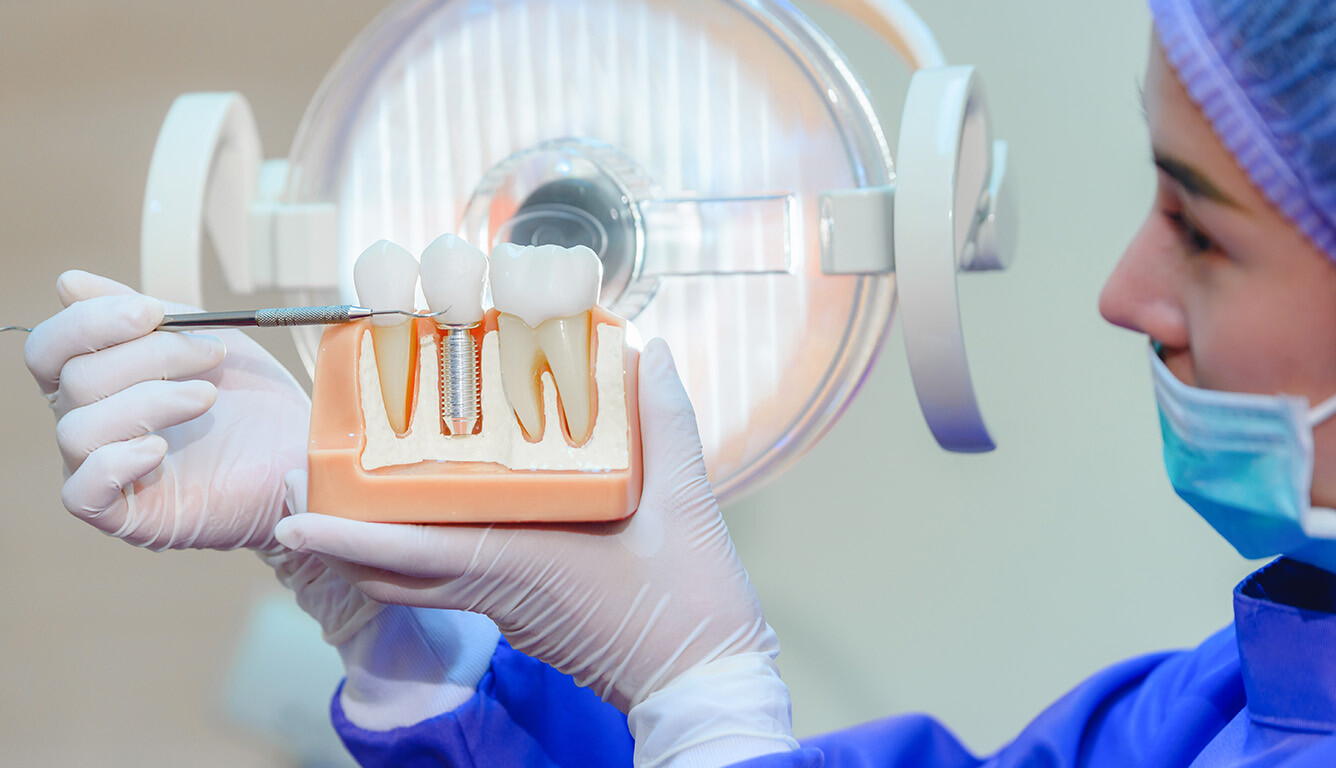Here’s How Dentists Assess Dental Implants for Their Patients

Dental implants have become increasingly popular in recent years due to their natural appearance, long-term durability, and overall convenience. While most people are aware of the cosmetic and functional benefits of dental implants, the process of determining their suitability is often overlooked. This article will take you through the meticulous assessment process dentists use to ensure dental implants are a suitable option for patients.
1. Comprehensive Dental Examination
A detailed dental examination is the bedrock of any successful dental procedure, especially when considering dental implants. Dentists prioritize this step to ensure they have a comprehensive understanding of the patient’s oral environment. Here’s a more in-depth look:
Dental X-rays: Modern dental X-rays, including panoramic and cone-beam computed tomography (CBCT) scans, give dentists a detailed view of the jawbone and its intricate structures. These X-rays are crucial for assessing bone quality, determining any underlying issues, and pinpointing the precise location for implant placement.
Oral examination: A hands-on check of the mouth provides insights that scans cannot. During this examination, dentists assess the health of the gums, the status of adjacent teeth, and check for signs of infections or any other anomalies. This step is indispensable for predicting potential complications and tailoring the implant procedure accordingly.
Detailed medical history: A patient’s overall health is inextricably linked to their oral health. Certain medical conditions, such as diabetes or autoimmune diseases, might impact bone healing. Similarly, some medications, like anticoagulants or bisphosphonates, can affect the body’s ability to heal post-surgery. A thorough review of a patient’s medical history ensures that all potential challenges are addressed in advance.
By amalgamating findings from these various assessments, dentists can design a tailor-made treatment plan for every patient, significantly increasing the odds of a successful dental implant.
2. Assessment of Jawbone Quality and Quantity
Dental implants, as state-of-the-art as they are, rely heavily on the natural architecture of the jawbone. The following aspects of the jawbone are diligently analyzed before considering implants:
Bone density: Bone density refers to the structural integrity of the bone. A denser bone is more robust and can securely support and anchor a dental implant. The bone’s ability to integrate with the implant, known as osseointegration, is crucial for the stability and longevity of the implant.
Bone volume: Simply put, there needs to be enough bone to house the implant. The height and width of the available bone are scrutinized to determine if it’s sufficient for the chosen implant size.
Jaw shape and size: Every individual’s jaw is unique. Its shape and size can influence the position, angle, and type of implant chosen. Furthermore, anatomical features like the location of the sinus in the upper jaw or the nerve in the lower jaw need to be accurately mapped to avoid complications.
In scenarios where the jawbone doesn’t meet the required criteria, all is not lost. Advanced dental procedures, such as bone grafting or sinus lifts, can be employed to augment the bone volume, thereby creating an optimal environment for the dental implant. Such procedures exemplify the lengths to which modern dentistry can go to ensure everyone can benefit from the transformative power of dental implants.
3. Evaluation of Gum Health
Healthy gums are foundational to the success of dental implants. The gums, being the soft tissue that surrounds the teeth, play a pivotal role in maintaining overall oral health. When considering dental implants, their condition becomes even more crucial. Here’s why:
Presence of Periodontal Disease: Patients with active periodontal disease may need to undergo treatment before even considering implants. Periodontal diseases, such as gingivitis or periodontitis, are infections of the gums that can damage the jawbone and other structures supporting the teeth.
Potential for Bone Loss: Conditions like gingivitis not only affect the gums but, if left untreated, can lead to further bone loss. This can compromise the base where the implant needs to be anchored, making the implant less stable.
Gum Recession: Another aspect to consider is gum recession. Receding gums can expose the base of a dental implant, leading to aesthetic concerns and increased susceptibility to infections.
Tissue Compatibility: The implant procedure involves integrating the implant with the surrounding gum tissue. Ensuring the gum tissue is healthy is vital for the implant to heal correctly and to avoid complications such as implant failure or peri-implantitis, an inflammatory process affecting the soft and hard tissues surrounding the implant.
In essence, ensuring gum health is not just about preventing diseases. It’s about laying the groundwork for a successful dental implant procedure and ensuring long-lasting results.
4. Understanding the Patient’s Lifestyle and Habits
Certain lifestyle habits can affect the success rate and longevity of dental implants.
Smoking: It’s a known fact that smoking hinders the body’s healing process. It can reduce the success rate of dental implants.
Oral hygiene habits: Good oral care ensures that the implants remain free from infection and last longer.
Diet: Consuming a balanced diet rich in vitamins and minerals can aid in the faster healing of the implant site.
During the consultation, dentists will discuss these factors in-depth, advising patients on any necessary lifestyle changes.
5. Analyzing the Aesthetic and Functional Aspects
Dentists take into consideration the patient’s aesthetic requirements and functional needs. The position, size, and color of the implant are matched to ensure that they blend seamlessly with the natural teeth, giving a flawless appearance.
6. Discussing Patient’s Expectations and Concerns
Every patient is unique, and so are their expectations. It’s vital to discuss:
Duration of the entire process: Some patients might require additional procedures like bone grafts, which can extend the timeline.
Post-operative care: This ensures patients know how to care for their implants, ensuring longevity.
Costs involved: A clear understanding of the investment can help patients make informed decisions.
7. Custom Treatment Planning
After gathering all necessary information, dentists create a tailored treatment plan, detailing each step of the dental implant process. This plan ensures each patient gets the best possible care suited to their specific needs.
Your Smile is Our Priority
Our goal is to provide our patients with dental solutions that enhance not just their smile but their overall quality of life. Dental implants, when appropriate, can offer an unparalleled combination of functionality and aesthetics.
If you are considering dental implants or have any questions about your dental health, don’t hesitate. Schedule a consultation with our clinic. Our team of experienced professionals is dedicated to providing you with the best possible care, ensuring your smile remains bright and healthy. Remember, the first step towards a radiant smile is just a consultation away.


